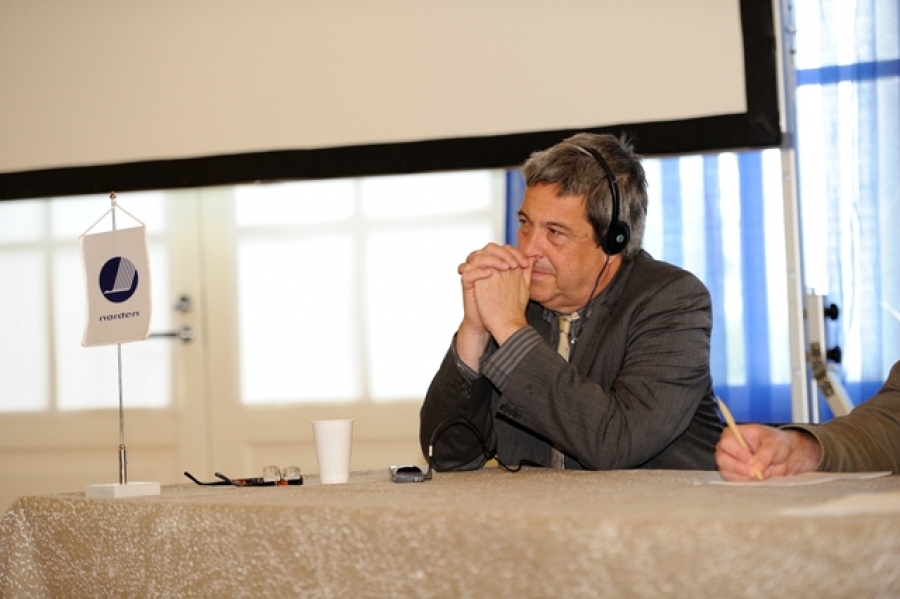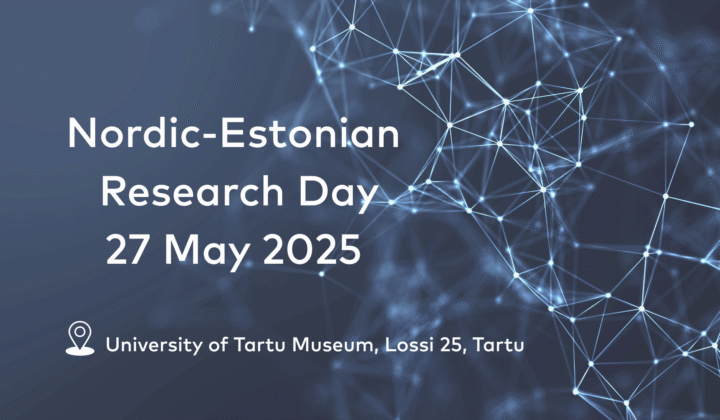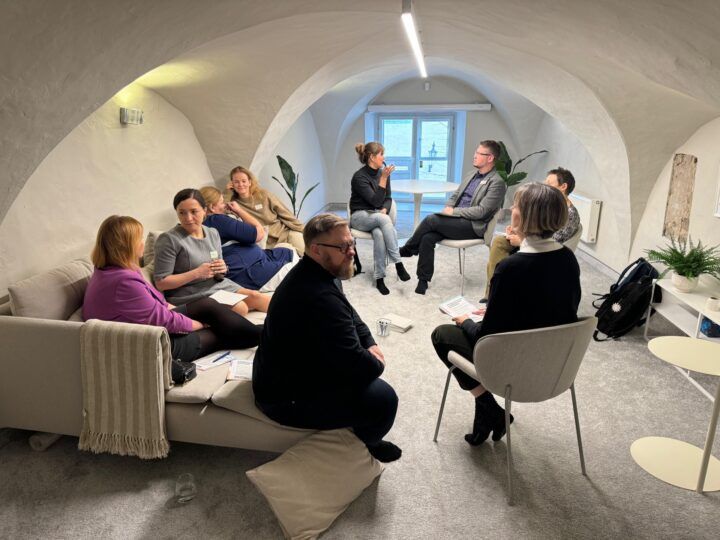Paul Collard: it is important how a subject is taught, not what is taught

Paul Collard, a creativity expert from Great Britain and keynote speaker at the second international creativity forum, emphasised the importance of pupils’ involvement in teaching. According to Collard, a well-functioning class is one where pupils are involved physically, socially, emotionally as well as intellectually. In such a class, young people feel more confident, which, in turn, translates into better study results. It is the teacher’s task to spark interest, study time is flexible, problems are solved in groups and students are able to manage on their own.
The creativity forum “Creativity Stimulates the Senses” organised by the Nordic Council of Ministers’ Office in Estonia and held on 22 and 23 August in Käsmu, Estonia gathered about a hundred teachers, school directors and educational officials. The aim of the forum was to introduce new methods of creative teaching via theoretical presentations as well as hands-on workshops. Speakers came from Great Britain, Estonia and all five Nordic countries.
Paul Collard, founder and chief executive of the non-profit organisation Creativity, Culture and Education, primarily gave an overview of the study programme “Creative partnerships” prepared on the request of the British government, relying on creativity and culture to promote social and economic change. According to his examples, creative education helps to improve the study results of students who are falling behind, for example, in maths or spelling. The study programme was applied over the period of 2008–2011 at 4,000 schools in Britain, but also at schools in Lithuania, Germany, Norway and Sweden.
Learning through emotions and conflicts
In Norway, the everyday happiness method “Five ways to wellbeing” is becoming increasingly popular and recognised. According to Ida-Christine Hansen, principal at Keyserløkka and Ola Narri kindergartens, the five ways to wellbeing are as follows: connect, be active, take notice, keep learning and give. This method promotes people’s wellbeing and encourages them to pay more attention to others.
The project concentrates on friendship, social skills, emotions, playing, managing conflicts and coping with adults. For example, child-oriented activities include group games building team spirit, learning to cope with emotions and discussions on what makes them happy or sad. To resolve conflicts, children come up with several solutions, choose one and evaluate whether the solution was successful. The main objective of the method for resolving conflicts is to encourage children to consider different viewpoints and comprehend the cause and effect relationship of their actions.
Role plays
At Østerskov private school in Denmark, founded by Mads Lunau, every week students discover new settings and roles, thus creating new stories in the classroom. The game is based on a fantasy world inspired by history, society as well as literature. The structure of the game is based on events occurring in the fantasy world. Students, in turn, have to react to the events, drawing on their knowledge and experience. Studies are interdisciplinary, including elements from workshops, storytelling, role plays and regular classes.
The innovative model of Agenta Möller-Salmela, reading-inspirer from Finland, is based on motivation (why), method (how) and magic (what). Among other things, endless knowledge, social and psychological development and improving concentration skills motivate one to read more. Classes are held in an inspiration room, decorated according to the subject at hand. The primary method is storytelling, but picture books, massage stories and glove puppets are also used.
A society created by children
Herðis Egilsdóttir, an experienced educator from Iceland, presented her renowned study method called “foundation”. According to the method, students create an island, colonise it and build a society with all the proper institutions and functions. Children create a fantasy world, taking other countries as examples and comparing them to the vision of life on their island. This method encourages children to think and look for information, while teachers show them from where to find what they are looking for. In an answer to the claim that such a method is too complicated for children, Egilsdóttir said that by no means should children be asked what they learnt, because this may lead them to the trap of ignorance.
Enjoyable learning instead of teaching
According to Ulla Wiklund, development specialist at Swedish schools and author of the idea of “listening creativity”, it is not only reading and writing that should be taught, but also aesthetic languages (music, arts, dance, theatre, design, media, etc.). In Sweden, teaching has been transformed into learning and study programmes that emphasise the importance of the learning process, in order to inspire student participation and turn the classroom setting into a more democratic one. Aesthetic learning is a method which encourages students to combine their emotions, experience, knowledge and the ability to analyse. Regular teaching methods are based on the students’ perception and presentation. In terms of learning, it is vital to give students time for analysis as well.
Ott Ojamets and Hedvig Evert from the Embassy of Education or the Embassy of Enjoyable Learning presented a language learning method adapted to the individual needs, interests, processing speed, knowledge level and abilities of a child. Ojamets and Evert claimed that due to the educational system there is not enough time for children to feel that they are learning. When learning, one should be free and happy and avoid the demands that kill creativity. Also, Ojamets and Evert are of the opinion that responsibility should be shifted from teachers to students and teachers should trust the students’ ability to come up with solutions.
Feeling valued is important
In discussions at the creativity forum, school directors and representatives of ministries underlined the need to value creativity in the study process and the teaching profession in Estonia. Such factors as better teacher education, investing in existing teachers, building freedom and confidence among teachers and employing creativity in studies, help to develop creativity at school to a greater extent. Trust between teachers and the school board is of utmost importance. Also, the board should support teachers and encourage them to present and apply their own ideas. All this promotes creativity.
Results and recommendations of the creativity forum
- To improve cooperation between schools and museums so that museums could be used in the study process.
- A number of teachers who participated in workshops and creativity studios promised to apply what they had learned in the classroom.
- It is important to involve parents in the study process. The link between school-student-parent should be solid and uniform.
- The national study programme for Estonian schools provides for relatively great freedom in terms of applying a creative approach in teaching. However, there is the need for a more systematic approach and more teacher training as well as the resources for this.
- Teachers should pay more attention to improving their creativity as a group (for example, joint interdisciplinary art exhibitions, performances, etc.) to build a lasting platform for developing creativity.
Click here for references to creativity forum presentations, photos, videos, etc.


